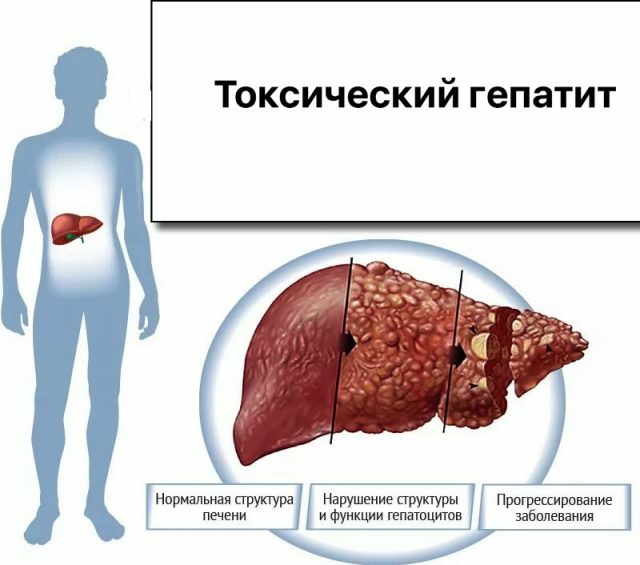Brucellosis is one of the infectious diseases that a person is exposed to when dealing with infected animals and products of their vital activity. Symptoms and treatment of brucellosis in humans depend on the type of bacteria, the disease can occur in mild form or lead to the development of severe multi-organ failure, entailing the death of the patient.
Contents
- 1 Brucellosis - what is it?
- 2 Brucellosis is transmitted, causes of infection
- 3 Symptoms of brucellosis in humans, first signs of
- 4 Diagnosis of brucellosis
- 5 Treatment of brucellosis in humans
Brucellosis - what is it?
Brucellosis is an infectious zoonotic disease prone to chronic course - the disease is characterized by the defeat of the musculoskeletal and nervous system, as well as genital organs and heart.

For the first time about the disease began to speak widely in the 19 century, when the English scientists were isolated microbes, the pathogens of this disease. By the name of the scientist, the disease was named, and the microorganisms themselves were called Brucella.
The causative agent of brucellosis is a small immobile bacterium from the genus Brucella. This genus consists of 6 species, each of which is further subdivided into several subtypes.
In humans, the disease is caused by three species of brucella, the hosts of which are goats, sheep, cattle, pigs, hares and less often dogs.
Important! The definition of a particular variety of bacteria plays an important role in the selection of treatment tactics and prevention of the spread of the disease.
Brucellosis is transmitted, the causes of infection
Brucella have a pronounced penetrating ability and enter the body even through intact( undamaged) mucous membranes. The bacterium itself is very stable in the external environment and retains its viability for several months, both in water and in meat.
When exposed to high temperatures, it dies almost instantly, is sensitive to the action of many antiseptic agents.
Brucellosis is transmitted to humans from various animals( goats, sheep, camels, yaks, pigs, etc.) that excrete the pathogen with feces, blood, saliva, milk and amniotic fluid. Transmission occurs fecal-oral, rarely contact and air.
The greatest danger is represented by milk and dairy products, meat and wool. Inadequate heat treatment of meat, ingestion of dust suspension, where Brucella is kept, the use of raw contaminated water - all these and other factors can cause the development of the disease in humans.
The disease can be spread from the mother to the fetus during labor and during breastfeeding.
Important! The susceptibility to brucellosis in humans is very high, i.е.contact or use of products contaminated with brucella, almost always leads to the development of the disease. Immunity is unstable and lasts for half a year. It is possible to re-infect another subtype of this bacterium.
Symptoms of brucellosis in humans, the first signs of

The symptoms of brucellosis in a person depend on the stage and form of the disease. The incubation period( from the moment of infection to the first signs) lasts several weeks, rarely stretches to a month.
According to the classification there are several forms of brucellosis, their symptoms are different:
1. Acute. Develops relatively quickly. The patient is worried about subfebrile temperature, weakness, malaise, joint pain. Gradually, lymph nodes increase and symptoms of intoxication increase: a high temperature appears, a person is shivering and feverish. Ultrasound scans increase the size of the liver and spleen.
Against the backdrop of high fever the patient can feel relatively normal, which significantly complicates the early diagnosis of brucellosis, as many patients do not attach importance to this.
In this form, attention is drawn to the disorder in the psychoemotional sphere: hysteria, irritability, depression, memory loss and performance. The patient is concerned about pain in the joints and muscles. Lymph nodes increase. The degree of severity is determined by the type of pathogen and the individual characteristics of the patient.
2. Subacute. Leaks with constant relapses. Patients present various complaints: from joint pain and fatigue to loss of vision and loss of libido. Allergic manifestations of the disease develop: eczema, dermatitis, itchy skin and rash. Women may experience spontaneous miscarriages.
3. Chronic. Periods of relative improvement are followed by periods of high fever and severe symptoms. Among the symptoms of chronic brucellosis in humans, disabilities of the musculoskeletal system, neurological disorders and pathology of the genitourinary system, both in men and in women, predominate. The defeat of almost all organs and systems is developing.
4. Residual. There is no causative agent in the body, but there are signs of residual disorders of the nervous and motor system. There is fatigue, excessive sweating, joint pain, muscle atrophy and other signs of brucellosis.
Diagnosis of brucellosis
Diagnosis of brucellosis is carried out in specially equipped laboratories. To obtain a reliable result, several serological techniques can be used at once.
At present, excretory excretion is not required, as the results can be obtained by simpler and more reliable assays for brucellosis( ELISA, RIF, etc.).
A special test was received by Byurne. It is based on the receipt of an allergic reaction to the skin when brucellin is introduced into it( a special Brucella protein).
With the development of edema and hyperemia on the skin 20-25 minutes after the administration of this protein - the sample is considered positive. Such a reaction is observed in all patients with brucellosis, even those who transferred it several years ago.
Treatment of brucellosis in humans

The treatment of brucellosis is complex and depends on the shape and symptoms of the pathology in humans. For treatment use drugs:
- Antibiotics. Apply several antibacterial drugs that act on both intracellular and extracellular forms( Rifampicin, Ofloxacin, Doxycycline, etc.).Anesthetics. Also, with severe pain, Novocain blockades are used.
- Detoxifying preparations.
- Anti-inflammatory and immunostimulants.
For today, they refuse from the previously used anti-brucellosis vaccine because of its properties to suppress immunity and enhance autoimmune reactions.
Prognosis and prophylaxis of
The prognosis is determined by the form of brucellosis and the condition of internal organs at the time of treatment. In most cases, the prognosis for life is favorable, but the patient may be long-term worried about the residual symptoms of the disease.
An important role is assigned to preventive measures. Conduct explanatory work on personal hygiene measures when working with animals and the inadmissibility of using thermally unprocessed products in disadvantaged areas. Persons whose profession is associated with animals are systematically examined for brucellosis. As ancillary activities, vaccinations are given to both workers and animals.
Brucellosis is a zoonotic infection that is transmitted by contact with a sick animal. It can occur in various forms and causes severe disorders of the nervous, musculoskeletal, sexual and other systems.
Preventive measures and early diagnosis will help to avoid the disease or cure it in the initial stages.



